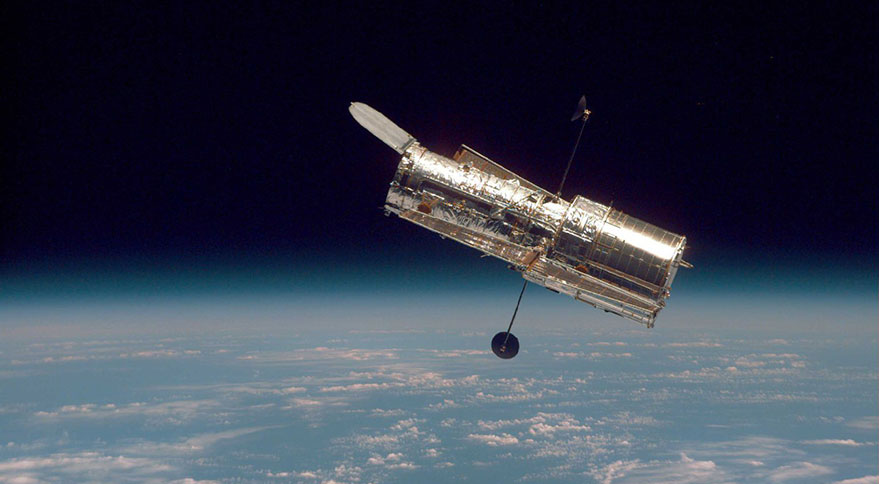

NASA’s Hubble Space Telescope has resumed normal operations after controllers fixed a faulty gyroscope on the spacecraft, the agency announced Oct. 27.
In a statement, NASA said that Hubble resumed normal science operations at 9 p.m. Eastern Oct. 26, and completed its first science observations, of a distant galaxy using the spacecraft’s Wide Field Camera 3 instrument, five hours later.
The observations were the first by Hubble since the Oct. 5 failure of the third of six gyros on the spacecraft. The spacecraft was placed in safe mode when one of the remaining three gyroscopes, turned on after having been held in reserve, reported rates far higher than actual ones.
Engineers eventually found a way to lower the anomalously high rates from that gyro, designated gyro 3, by performing a series of maneuvers that appeared to clear a bloackage within the gyro. By Oct. 22, NASA said that the rates from the gyro were back to normal, and were performing additional engineering tests to confirm that the gyro was working properly.
By Oct. 26, engineers had completed tests of the gyro, including performing maneuvers that simulated those Hubble would carry out during science observations. Controllers also reactivated Hubble’s instruments. “Hubble successfully completed maneuvers to get on target for the first science observations, and the telescope collected its first science data since Oct. 5,” the agency stated.
With three working gyros, Hubble is able to perform normal science observations. Had the faulty gyro not been fixed, NASA was planning to bring back Hubble with just a single gyro, which would have allowed most, but not all, observations that the spacecraft can perform when three gyros are working. “We can do Hubble-quality science, in a smaller fraction of the sky, when we go to one-gyro mode,” said Paul Hertz, director of NASA’s astrophysics division, during an Oct. 22 meeting of the agency’s Astrophysics Advisory Committee.
That one-gyro mode may ultimately be needed as NASA seeks to extend the lifetime of Hubble, launched in 1990 and last serviced in 2009, into the 2020s. “The team expects the telescope will continue to yield amazing discoveries well into the next decade, enabling it to work alongside the James Webb Space Telescope,” NASA said in its statement.